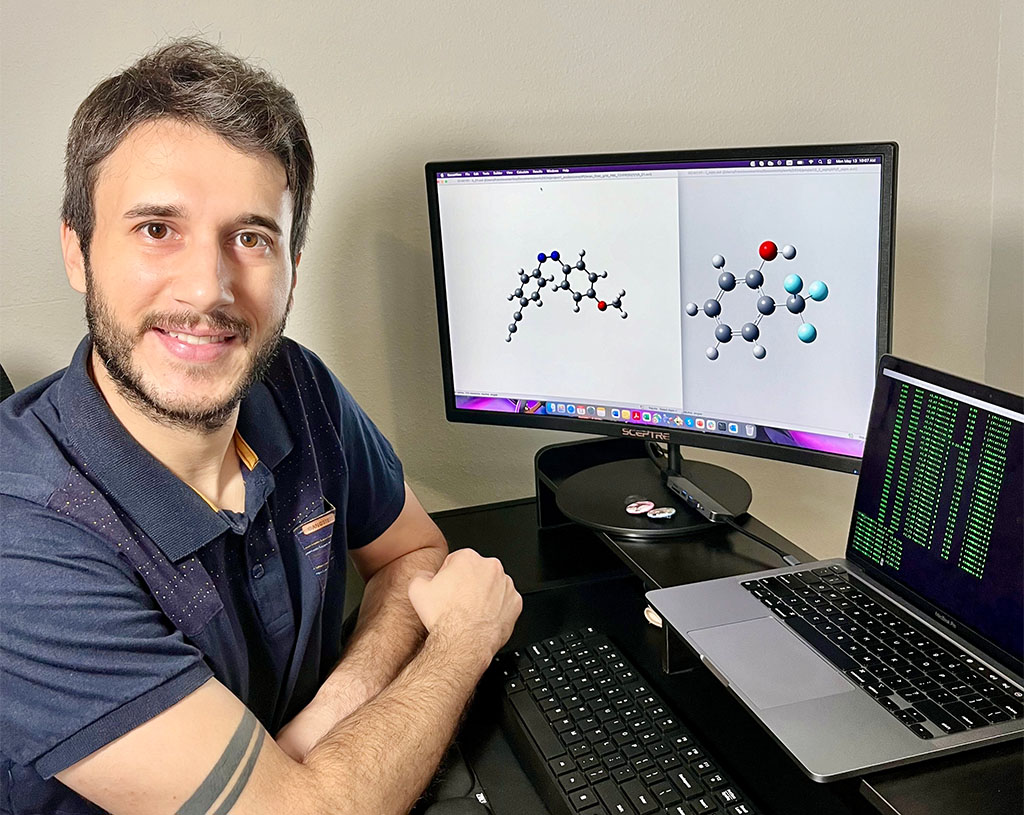Honor Recognizes Rising Scientists for Promoting Diversity and Inclusion in Chemistry
Francisco Martins, a postdoctoral fellow in chemistry at the University of Houston, is one of 17 scientists chosen to receive the 2024 Merck Research Award for Underrepresented Chemists of Color. Martins is one of only two postdocs in the group of awardees.

Created in 2021, the award recognizes underrepresented chemistry Ph.D. students and postdocs who have demonstrated outstanding research achievements and leadership in the chemical sciences. Recipients are also actively promoting diversity and inclusion within their communities.
Promoting Diversity in Science
“I believe that receiving this award will be a significant step toward achieving my personal goal of becoming a research scientist and helping to shape new technologies that are useful for society,” said Martins. “The award, with its associated networking opportunities, mentorship and exposure, will help me achieve this aspiration. Beyond the award recognition, it also will enhance my ability to advocate for diversity in science.”
The award covers expenses to attend the 2024 Merck Awards Symposium in Rahway, New Jersey, where he will present his research and be honored.
“His work exemplifies excellence and underscores the importance of diversity in driving scientific innovation,” said Judy Wu, associate professor of chemistry at UH’s College of Natural Sciences and Mathematics.
To be eligible, individuals must be in their third and fourth year of graduate school or be a postdoctoral researcher, with a focus in one or more of the following areas: organic, inorganic, medicinal, analytical, chemical biology, computational or structural chemistry, and related disciplines.
Through his research, Martins not only expanded the understanding of complex chemical processes but also served as a mentor and role model for aspiring scientists from underrepresented backgrounds. Martins works with students in Brazil as an advisor and coordinates outreach through an Instagram account in Portuguese where he explains machine learning and how it can be applied in chemistry.
Exploring Molecular Models
“As a postdoc at the University of Houston, I’m exploring how light and aromaticity can drive important organic reactions and impact organic moieties with application in various fields,” said Martins. Moieties are particles that are shared between molecules in compounds.
Martins’ research focuses on molecular modeling of organic and bio-organic compounds intended to develop high-performance organic moieties with applications in material science, agrochemistry and medicinal chemistry.
Think of the process as building with Legos but on a very small scale. Martins uses a computer for predicting how the tiny particles (molecules) fit together and interact to form different materials or chemicals. By doing so, improvements to pesticides for farming and the development of new medicines is made possible.
In one of his projects, Martins focuses on understanding how photoswitches operate. Photoswitches are molecules that are capable of changing shape when exposed to light.
“These compounds have uses in responsive materials and can control drug release timing and location,” said Martins.
In another project, Martins is examining fluorinated molecules, which are found in many bioactive compounds.
“I’m studying how to activate carbon-fluorine (CF) bonds using aromaticity and excited-state proton transfer,” explained Martins. “In this project, we’re also looking into trapping fluorinated intermediates to expand the range of fluorinated building blocks in organic compounds beyond the most common CF and CF3 groups.”
- Chris Guillory, College of Natural Sciences and Mathematics